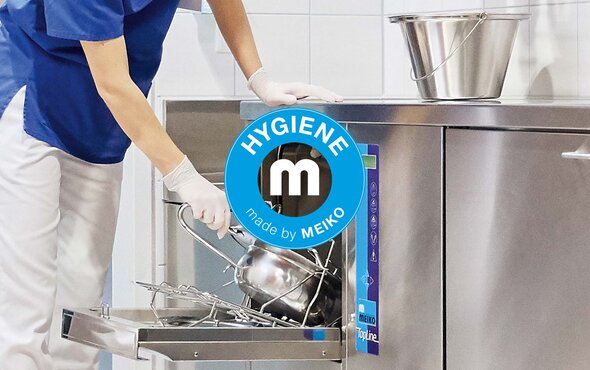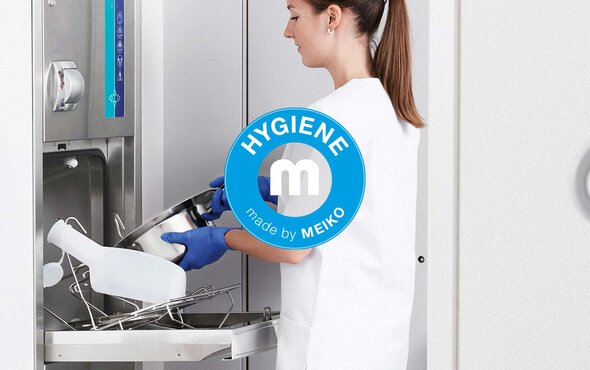These videos show you step-by-step instructions on how to handle a bedpan after it has been used by a patient. We also identify where possible errors can happen. Watch now:
STEP 1:
Put the bedpan down and take care of the patient

Do's
- Best storage space: Put the bedpan on a side trolley, the floor with an underlay, or the rubbish bin can if necessary (when standing securely).
- If the bedpan is dirty, wipe and disinfect the storage surface afterwards.
- After providing patient care, change disposable gloves or disinfect hands.
Don'ts
Do not put it down in a position that someone could trip over it.
Never put it down on the patient's bed, bedside table, or chair.
STEP 2:
Transport filled bedpan
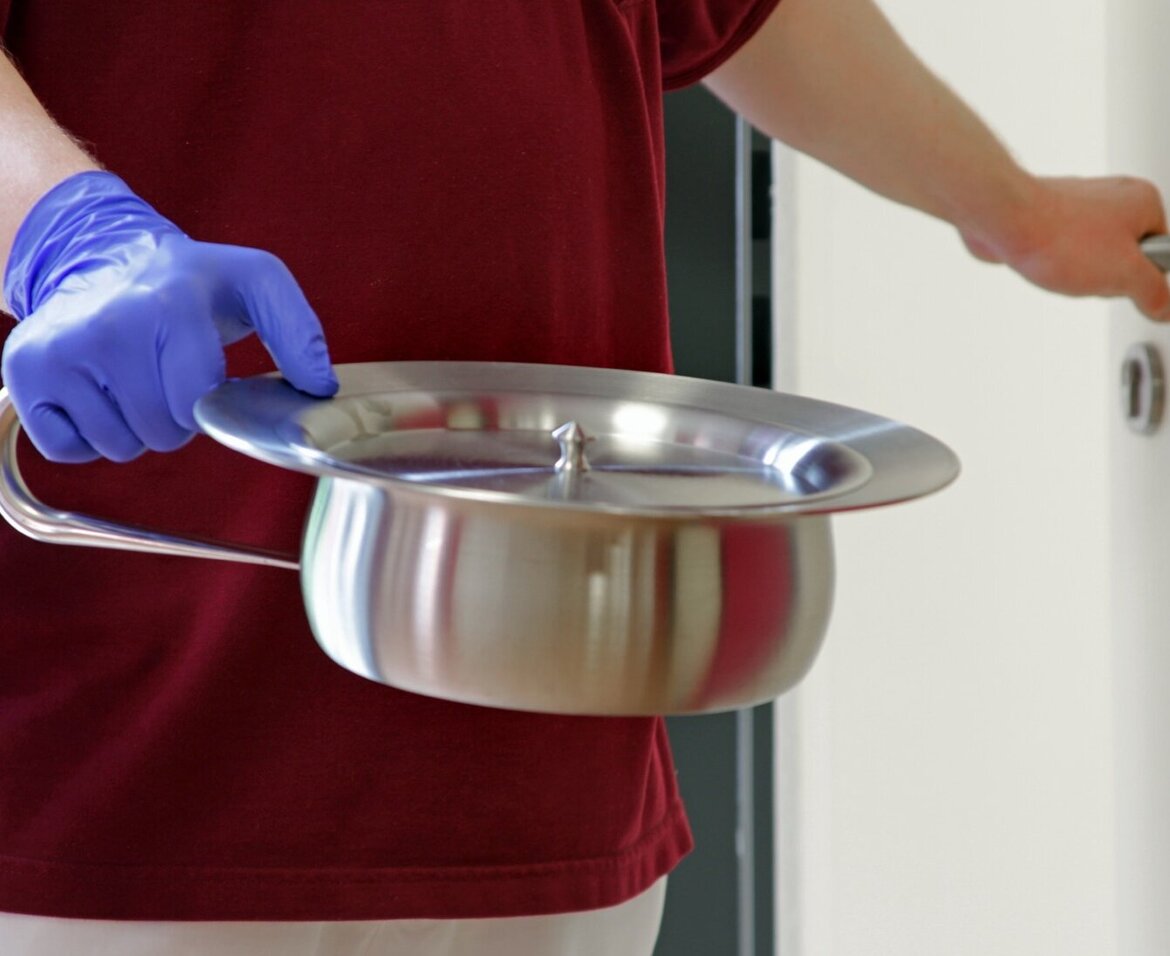
Do's
- When leaving the patient’s room, only touch the door handle with the other, clean hand.
- This is because it is the part of the patient environment and key transmission vector that you should touch only with disinfected hands or clean gloves.
Don'ts
- Switch hands (clean, unclean).
- Interrupt transport—do it quickly and safely.
STEP 3:
Enter utility room

Do's
Only open the door of the utility room using the clean hand.
It would be even more hygienic if the door can be opened with a foot switch.
STEP 4:
Open bedpan washer-disinfector
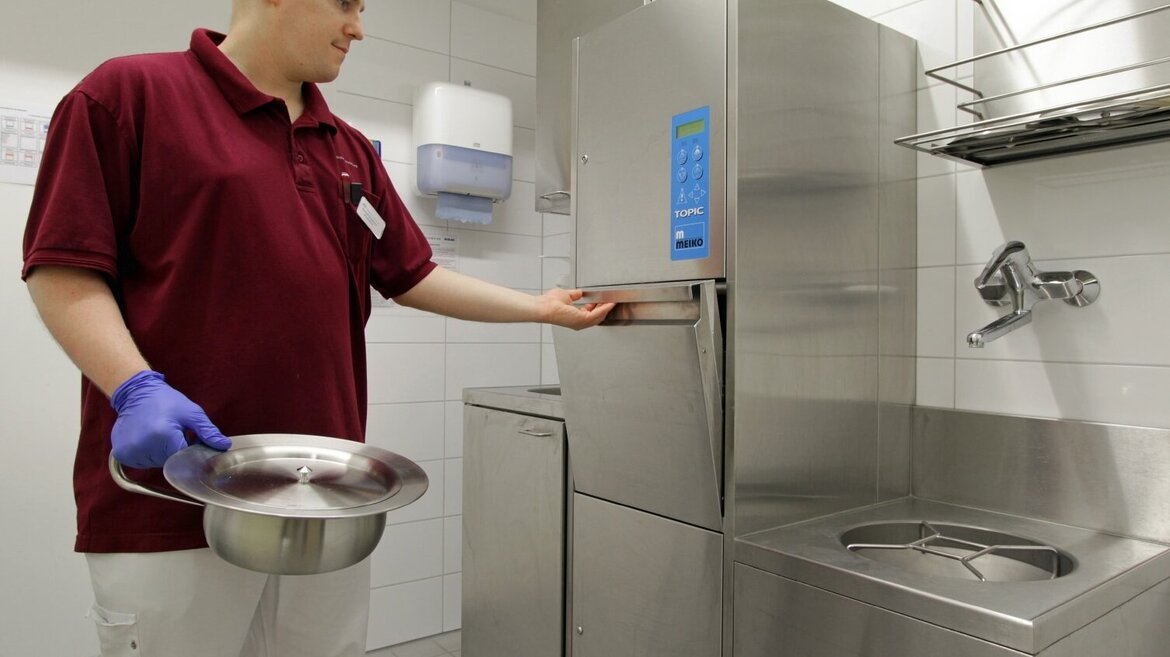
Do's
- Only use your clean hand to open the door because you will touch it again when removing the disinfected care utensil. This is the only way to prevent a chain of contamination.
- It would be even more hygienic with bedpan washer-disinfectors with automatic door opening, which are opened by foot switch or by holding a hand in front of the sensor.
STEP 5:
Place the bedpan in the device properly

Do's
- Place the care utensils and their contents correctly in the bedpan washer-disinfector while wearing gloves according to the instructions. (Put stickers with illustrations of the operating instructions near the device.)
- Insert the cover of the bedpan separately in the position provided.
- The device performs the emptying process when the door is closed.
Don'ts
- Do not come into contact with the contents.
- Never empty the bedpan and urine bottle manually into the machine, neither into a toilet or a separate slop sink unit. This is because splashes and released aerosols increase the risk of contamination.
- Only place care utensils for which the device is intended (no diapers, bandages, flower vases, trays, etc.)
STEP 6:
Start device
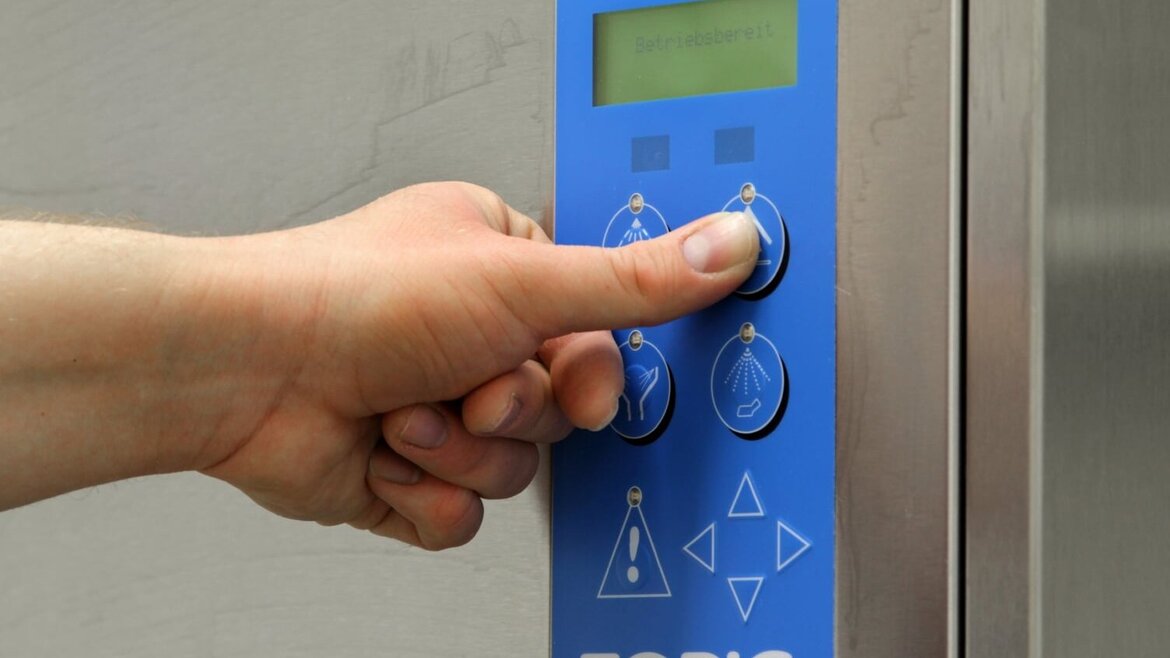
Do's
- Use your clean hand to close the bedpan washer-disinfector.
- Select the programme according to the washware and the degree of soiling.
- Also use your clean hand to operate the start button.
- Remove and dispose of the contaminated glove properly.
- An absolute must: disinfect your hands.
CAUTION: If the patient has a Clostridium difficile (now Clostridioides difficile) infection then it is not enough to just disinfect your hands. Mechanical friction is virtually the only way to remove the spores, so wash your hands before disinfecting them!
STEP 7:
Remove the care utensils after disinfection

Do's
- After the cleaning process, open the door, remove cleaned and disinfected care utensils, and close the door again—all using your clean hand.
- It would be even more hygienic with bedpan washer-disinfectors with automatic door opening, which are opened by foot switch or by holding a hand in front of the sensor.
You can now safely touch and reuse the care utensils without hesitation.
Correct use of the device and proper operation not only helps to prevent infection, it also contributes to a longer service life of the machines. If something is unclear or you have any questions, please do not hesitate to contact MEIKO.
And how do you clean other nursing gears and tools such as operating theatre boots or wash bowls? The Medical Devices Act does not consider these as medical devices. Still, you need to clean, disinfect, and in some cases, even sterilise these for occupational and patient safety reasons. This is where MEIKO's TopClean 60 comes in! The option of choosing between thermal or chemo-thermal disinfection means that even heat-sensitive materials such as operating theatre boots can be thoroughly and hygienically cleaned without getting damaged.

